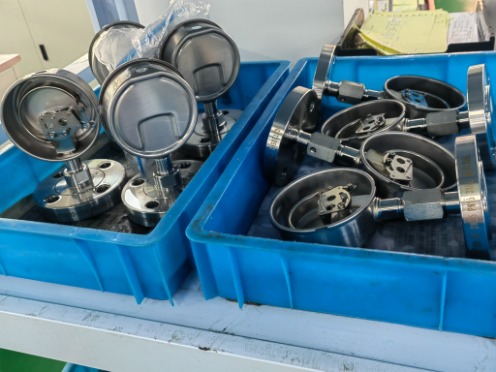Y series general stainless steel pressure gauge
Cat:Pressure Gauge
◆ Model: Y40 Y50 Y60 Y75 Y100 Y150 Y200 Y250◆ Use: This series of instruments is suitable for measur...
See DetailsThe choosed process should be based on the characteristics of the medium, the measurement conditions, the installation requirements, and the accuracy demands. It should comprehensively match parameters such as the diaphragm material, structural form, and range, to ensure that the instrument is suitable for the site and can guarantee the measurement accuracy.
I.Clearly define the characteristics of the measured medium
· Corrosion resistance: Select the membrane material based on the acidity and alkalinity, as well as the oxidizing and reducing properties of the medium:
Ordinary weak acid/alkali: 304/316 stainless steel diaphragm
Highly corrosive (such as concentrated sulfuric acid, aqua regia): Hastelloy (C-276), Monel alloy or polytetrafluoroethylene (PTFE) diaphragm
Food/Pharmaceutical Industry: Must comply with FDA standards of 316L stainless steel + sanitary diaphragms (such as silicone rubber).
·Viscosity/Particle Content: For high-viscosity or particle-containing media (such as mud, paint), select a flat or convex membrane structure that is resistant to clogging to prevent membrane wear.
· Toxicity/Fire Hazard: For toxic or flammable/explosive media, a sealing flange connection diaphragm with excellent sealing performance is required to prevent leakage.
II. Determine the measurement conditions and parameters
· Pressure range:
The standard measurement range is set at 1.3 to 1.5 times the upper limit (for example, if the maximum pressure is 1 MPa, select a range of 1.6 MPa).
For pulsating pressure scenarios (such as at the pump outlet), a range that is at least twice the peak pressure should be selected to prevent the diaphragm from being damaged due to fatigue.
·Temperature range
When the medium temperature is too high (e.g. > 200℃), it is necessary to select a high-temperature-resistant diaphragm material (such as Hastelloy alloy) or install a condenser tube.
In extremely low temperature environments (such as below -40℃), it is necessary to confirm the low-temperature resistance of the diaphragm material (such as fluorine rubber).
·Environmental conditions: For scenarios with frequent vibrations (such as compressors), it is necessary to select a diaphragm meter with a damping structure to prevent the pointer from shaking and affecting the reading.
III. Structural form and installation compatibility
| Structural Type | Characteristic | ||||||
| Flat Membrane Type | Flat diaphragm,Simple onstruction | ||||||
| Convex Membrane Type (Wavy Membrane) | The diaphragm bulge enhances the compressive resistance | ||||||
| Threaded Type | Direct thread connection,Easy installation | ||||||
| Flange Type | Good sealing performance,Suitable for high-pressure/acidic environments | ||||||
| Hygienic (Quick-Installation Type) | Anulated connection,Easy to clean with no dead corners | ||||||
IV.Matching installation and interface requirements
·Interface Specifications: Common interfaces include M20*1.5, G1/2, NPT1/4, etc. They must be consistent with the interface of the pipeline or equipment.
·Installation method: Vertical installation (with the dial facing upwards) or horizontal installation. For flange type, it is necessary to ensure that the spacing of the threaded bolt holes complies with pipeline standards (such as DN50, PN16).
V. Accuracy and protection level
·Accuracy grade: The commonly used accuracy levels are 1.0 grade and 1.6 grade (error ±1% to ±1.6%). For precise measurements (such as in laboratories), the 0.5 grade can be selected.
·Protection level: For outdoor or humid environments, select a level of IP65 or above to prevent water from entering and affecting internal components.
Selection Considerations
Compatibility of the medium with the diaphragm material
·For instance, polytetrafluoroethylene (PTFE) membranes are resistant to strong acids and strong bases, but they are not suitable for high-temperature molten metals; Hastelloy C-276 is suitable for media containing fluorine ions, but it is relatively expensive.
Temperature compensation requirement
·When the temperature of the medium differs significantly from the ambient temperature (for example, > 50℃), the influence of temperature on the elasticity of the diaphragm needs to be considered. In such cases, a diaphragm gauge with temperature compensation can be selected.
Cost and balance of value for money
· Special materials (such as titanium alloy) for diaphragm seals have high costs. It is necessary to select them based on the specific working conditions and requirements to avoid over-sizing which may lead to waste.
Reference for selection cases
Scene
·A chemical enterprise needs to measure the pressure of a 30% concentration hydrochloric acid pipeline (with a temperature of 80℃ and a pressure ranging from 0 to 0.8 Mpa).
Selection suggestions
Diaphragm material: Hastelloy C-276 (resistant to hydrochloric acid corrosion).
Structural form: Flange type (DN25, PN10) - prevents leakage.
Range: 1.0 MPa (0.8 MPa * 1.25 times).
Accuracy: 1.6 grade, protection level: IP65.

Summary:
The selection of diaphragm pressure gauges should be based on the "medium - operating conditions - installation" principle. Through precise matching of materials, structures and measurement ranges, a balance between measurement reliability and economy can be achieved. Especially in industries such as chemical engineering, food processing, and petroleum, correct selection is crucial for ensuring production safety and data accuracy.